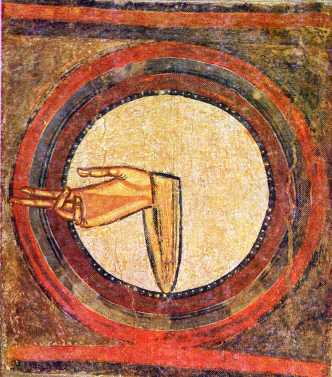Today I wanna talk about why that famous “Hand of God” painting actually matters. Like, seriously matters for art history. This started ’cause I bumped into a poster of it at my cousin’s messy apartment. Just God’s finger touching Adam’s, ya know? Felt weirdly familiar but I couldn’t pin down why.
Getting Curious
So I grabbed my coffee and went down the rabbit hole online. First thing I noticed? Everyone and their grandma says it’s all about religion. Fine, okay. But my gut said there’s gotta be more. I mean, it’s EVERYWHERE. Posters, book covers, those cheap souvenir t-shirts tourists buy. Why this specific image?
I started saving pics of it. Like, a ton. Zoomed in real close. Saw details I totally missed before. That light coming outta God’s finger? Adam ain’t just lazy-chilling – he’s kinda leaning in, almost straining to reach back. And God isn’t just floating there peaceful. Dude looks intense, focused, muscles tense. Seriously changed how I saw it.

Digging Deeper (More Coffee Needed)
Okay, so who even painted this thing? Took some digging. Forgot the name at first – Michelangelo! Right! Sistine Chapel ceiling, obviously. That thing took him years, painting flat on his back. Insane. But why’s this bit so famous? Gotta be more than just “God and Adam high-fiving.”
Here’s what clicked: Before Michelangelo, pictures of God were… well, stiff. Like royalty portraits with a halo. Distant. All-powerful boss vibes. Complicated scenes everywhere.
- Then BOOM: Michelangelo drops this.
- Simplicity: Zoomed right in. Just hands and eyes.
- Connection: It’s all about that tiny gap, almost touching. Feels electric.
- Humanity: Adam looks real. Not some holy card. Like he could have back pain.
Artists lost their minds after this. Suddenly everyone’s trying to capture that same feeling – that spark, that tension. It wasn’t just about showing God; it was about showing a moment. A single powerful connection.
Why It Sticks
Realized it’s like a visual meme from way back. Got stolen, copied, rehashed in ads and cartoons endlessly. That simple shape – two fingers nearly touching – everyone gets it instantly. It’s become shorthand for creation, inspiration, a lightbulb moment. Even if you’ve never set foot in a church, you’ve seen this image.
Most art history textbooks got this wrong, honestly. Talked too much about religion, not enough about the pure impact. Before this, art was like looking at stiff people in a play. After? Michelangelo showed how to make it feel real. Raw. Full of anticipation. Like catching lightning in a bottle on a plaster ceiling.
Still figuring it out. But yeah, that dusty poster at my cousin’s? It mattered way more than I thought. Changed the whole game, one finger at a time.

